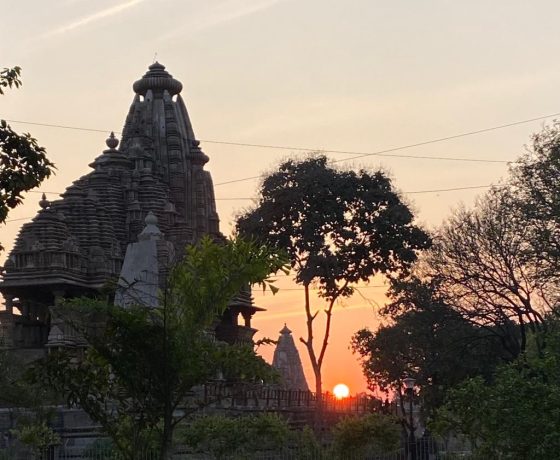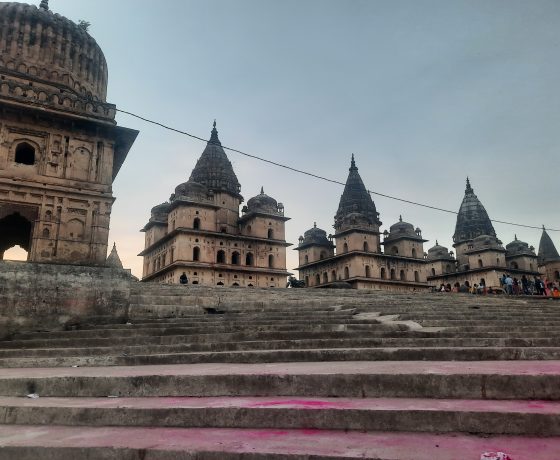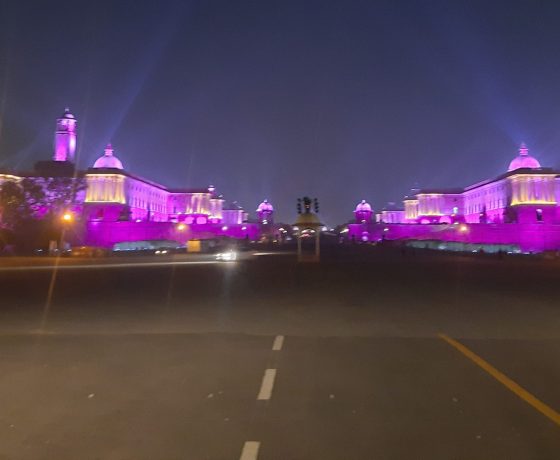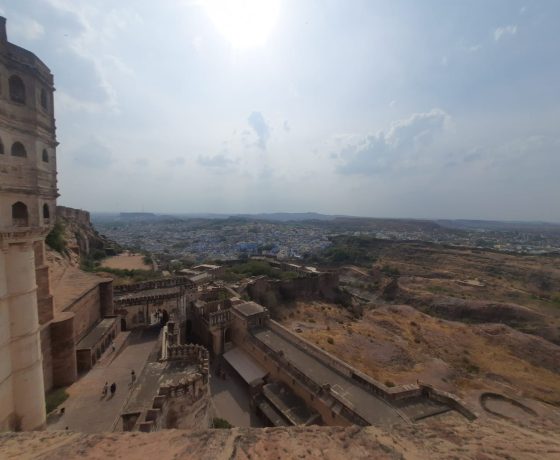Ladakh Tour
Ladakh Tour
Ladakh is the coldest desert on the earth, with top three highest mountain passes in the world. Ladakh has strong links with Buddhism and Tibetan culture. From architecture to cuisine, this region has an Eastern outlook. This is a very famous tourist destination for those who love isolated adventure spot for many outdoor activities that pump adrenaline into the brain. Ladakh is a stretch of null vegetation hills, craggy mountain passes, thick snow, monasteries and clear water bodies that usually stands as block ice.
Tour Program
Arrive in Delhi today and get transferred in a private vehicle to your hotel where accommodation is held from 1400 hrs. Check-in and spend the rest of the day to explore the bustling national capital. Overnight in the hotel.
Delhi offers a harmonious blend of architecture and history. From remnants of the Mughal empire and British Raj to contemporary India, you can experience it all in the capital. The city is sure to charm you with its eclectic mix of the old and new – from magnificent monuments to bustling Old Delhi markets and stunning high rises.
Meet and transfer to airport to board flight to Leh. Leave for Leh by an early morning flight (approx 1.5 hrs flight). Meeting and assistance on arrival and transfer to hotel. Breakfast at the hotel in Leh. Day free for altitude acclimatization. You can take a walk in the Leh bazaar, visit Leh Palace & the Shanti stupa. Overnight in the hotel.
Sometimes known as ‘Little Tibet’, Ladakh is an ancient kingdom in north-west India, bordering Pakistan and the Tibet Autonomous Region. Ladakh has two administrative Districts: Leh (majority Buddhist) and Kargil (predominantly Muslim).
The Leh Valley lies at an altitude of about 3,500 metres and the surrounding mountains rise to over 6,000 metres. The area is remote: the main road linking Ladakh with the rest of India is cut off by snow for six months or more each year.
Leh– the capital of Ladakh (altitude 3505 m). Sheltered in the North by the Ladakh range and in the South by the Zanskar Mountains, Leh gets very little rainfall. This is a high-altitude desert environment where water is precious. Agriculture and human settlements depend on water from snow melt, which flows towards the Indus River.
The most attractive feature of the landscape of Ladakh are the Buddhist gompas (monasteries). Situated on the highest point of the mountain spurs or majestically sprawling over cliff-sides, located in the vicinity of villages, these aesthetically pleasing, architecturally interesting gompas provide the focus for the faith of the highly religious Buddhist people.
Shanti Stupa, literally means peace(Shanti) pillar (Stupa) established by a ‘Peace Sect’ of Japanese Buddhists, is situated above Changspa in Leh District of Jammu and Kashmir. The stupa was opened in 1985 by Dalai Lama with an intention of Spreading Buddhist ideology and teaching all through the world. This is a place which tells the world the need for peace and harmony among its population. The stupa is very attractive with the sides are decorated with gilt panels showing the life stories of Great Buddha. The surrounding are worth seeing with the enchanting views snow capped mountains, spectacular unique styled Ladakhi houses and the towering Namgyal Tsemo Gompa.
Breakfast at the hotel. After breakfast, leave for Temisgam visiting the monasteries at Likir, Alchi and Mangyu en route (7 to 8 hrs including visits & stops). Arrive Temisgam and check-in at the hotel. Overnight stay at the hotel.
Likir is also known as Klu-Kkhjil (water spirits), founded in the 11th century AD and was rededicated to another monastic order (the yellow sect) in the 15th century, its earlier gompa was destroyed in fire. The present gompa dates back to the 18th century. It contains huge clay images of Buddha’s (past, present & future) and various old manuscripts. It also houses an interesting collection of thankas, old religious and domestic costumes and implements etc. The Likir monastery is on the old caravan road from Basgo to the bridge of Khalse. The main temple contains stupas, statues of Sakyamuni, Maitreya and Tsongkyapa, founder of the Gelupa order. One Can see a huge image of Budhha here.
On the bank of the Indus is the village and religious sanctuary of Alchi, one of the oldest of monasteries in Ladakh. As per the Historians, the monastery was founded in the 11th century by Kal-dan Shes-rab, a nobleman of Tibet who moved to this region to resist the tides of Hinduism and Islam. Its unique art forms have a distinctive Tibetan flavor. Paintings cover every available inch of space.
Breakfast at the hotel. Full day excursion to Lamayuru – visit the Kagyupa Monastery, one of the oldest Buddhist monasteries in the world. After visits return to Temisgam (return journey would be approx 6 hrs, including the visits). Overnight at the hotel.
The town of Lamayuru is located at a distance of 127 kilometres from the town of Leh, and it has a very spectacular gompa, that is located in a very serene setting. Lamayuru is famous for the Kagyupa Monastery, which is one of the oldest Buddhist monasteries in the world. This monastery is located near a beautiful lake, with the huge mountains providing an intimidating background. The Kagyupa monastery was built way back in the 10th century, and is quite large even by today’s standards. It currently accommodates more than around 150 monks. The monastery has been rebuilt many times, and this can plainly be seen in its architecture. Frescoes, murals, shrines and thangkas adorn the walls of the monastery, and you can take a look at these during your trip to Lamayuru.
Breakfast at the hotel. Leave for Leh , visiting Rizong Monastery, Chulichan Nunnery and Basgo Monastery. Arrive in Leh, check – in at the hotel. Overnight at the hotel.
Around 1.5km below Rizong Monastery lies Chulichan Nunnery, one of the oldest nunneries in Ladakh. It is famous for it’s orchards of sweet apricots. There are currently 15 nuns at the nunnery, aged 10-18. All can read and write English and some have relatively good spoken English.
Rizong is located about 73 Kms from Leh this place is also known as Yuma Changchubling. Rizong Gompa was founded about 138 years ago by the great Lama Tsultim Nima. Gompa belong to Gelukpa order. This place is known for the nunnery of Chulichan complete jobs like spinning wool, milking, extracting oil for the temple lamps has to be performed by all the nuns.
Basgo Monastery, also known as Basgo or Bazgo Gompa, is a Buddhist monastery located in Basgo or Bazgo in Leh District, Ladakh, northern India approximately 40 km from Leh.
Although the monastery was built for the Namgyal rulers in 1680, Bazgo itself was embedded in the early days of Ladakh and is frequently mentioned in the Ladakhi Chronicles when it was a political and cultural center.[1] The monastery is situated on top of the hill towering over the ruins of the ancient town and is noted for its Buddha statue and murals. In the 15th century, a palace was built in Basgo.
Breakfast at the hotel. After breakfast, leave for Nubra valley over the Khardong La pass, stopping en route for lunch (125 kms/ approx. 6 hrs including stops). Arrive Sumoor and check-in at camp. Later visit the 150-year-old Samstaling monastery situated on the mountain side just above Sumoor. Overnight in the Camp.
Samstanling Monastery is founded by Lama Tsultim Nima around 140 years ago. The Monastery is situated in a Village called Sumur in Nubra distric. This Monastery is located 123 km north from city Leh. In this monastery 50 monks reside and their food and dress provisions are provided by the governing body of the monastery. The successive reincarnations of Lama Tsultim Nima and of Sras Rinpoche act as the incumbents of the monastery.
Breakfast at the Camp. Morning: Excursion to Deskit & Hundar monasteries. After the visits return to Sumoor. Later visit the villages nearby. Overnight in the Camp.
Deskit Village is the main village of headquarter of Nubra valley, which has a small market consisting of a row of shops and about 500 years old Gompa on the hilltop. Spectacular view of the valley can be seen form the monastery.
Deskit Gompa was founded by Lama Sherab Zangpo of Stod in about 1420 AD during the reign of King Dragspa. About 100 monks are residing in the Gompa, which is a branch of Thikse Monastery. The monastic festival called Gustor takes place on 20 th and 21 st days of the 12 th month of Tibetan calendar.
Hundar is a beautiful village, it has a small monastery and ruined fort above the village. The walk or Camel Safari (Double Hump Bactrian camels) from Hundar to Deskit, through sand dunes for two hours is wonderful.
Breakfast at the hotel. Full day excursion to Shey, Thikse, Hemis and Chemrey Monasteries. Overnight at the hotel.
Shey Monastery, an erstwhile Royal residence up to 16th century, is located at a small village Shey near Leh on the banks of Indus River and is managed by Buddhists Monks from Hemis Monastery. Lhachen Palgyigon, the first King of Ladakh built this Monastery. The building is placed on a ridge similar to a knife edge and the approach to the monastery is decorated with many stupas and shrines. The prime attraction of the monastery is the blue haired Maitreya Buddha of 17.5 m high, which is made with copper and brass and also decorated beautifully with studs of precious stones. Guarding deities, paintings showcasing Buddhist preaching and Tibetan style stone carvings are very attractive. Many tourists visit this place to have a first hand experience of Buddhism and its cultural past.
Thiksey is one of the largest and architecturally most impressive of all gompas. There are several temples in this gompa containing exquisite images, stupas and wall paintings of the Buddha.
Hemis – It is the best-known and biggest gompa of Ladakh. It is situated on the banks of the Indus. The monastery, which houses five hundred monks, has beautiful paintings and thankhas. Hemis was built in 1630 during the reign of Sengge Namgyal, an illustrious ruler of Ladakh. It is divided into two, the Assembly Hall on the right and the main temple on the left. The temple is known as Tshogkhang. The verandahs have a surfeit of frescoes, among them the Buddhist “wheel of life” (Kalachakra) and the “Lords of the Four Quarters” besides rows of prayer wheels.
Breakfast at the hotel. Morning: Visit Phyang Monastery. In the Afternoon: Visit Spituk Monastery, Stok Palace and the Shankar Gompa. Overnight at the hotel.
Phyang Monastery of Ladakh is situated at a distance of approximately 40 km to the west of the Leh town. It belongs to the Red Hat Sect of Buddhism. The site where the monastery now stands was once a part of the numerous monastic properties, offered during the time of Dharmaraja Jamyang Namgial to Chosje Damma Kunga. The hill of Phyang served as the venue of a monastery, known as Tashi Chozong, established in the year 1515. A monastic community was introduced to the monastery and with this started, the first establishment of the Digung teachings in Ladakh.
Stok Palace-The Royal family of King Singe Namgyal is presently residing in this palace, after the royal family moved out of Leh palace. Stok palace, built King Tsespal Tondup Namgyal in 1825 AD, is an outstanding eye catching palace where the ancient and modern architectural styles are making their lively presence. This palace is famous for beautiful gardens apart from the architectural beauty.
Breakfast at the camp. After breakfast leave for Leh, visiting Tak-thok Monastery en-route. A journey of about 6 – 7 hrs, including stops and visits. Arrive in Leh, check – in at the hotel. Overnight at the hotel.
Takthok Monastery (also known as Thag Thog or Thak Thak) is a Buddhist monastery in Sakti village in Ladakh, located approximately 46 kilometers east of Leh. The name Takthok, literally meaning ‘rock-roof’ was named because both its roof as well as walls are made up of rock. It belongs to the Nyingma sect of Tibetan Buddhism and approximately 55 lamas reside there. It is the only Nyingma monastery in Ladakh. The monastery was founded around the mid-16th century during the reign of Tshewang Namgyal on a mountainside around a cave in which Padmasambhava is said to have meditated in the 8th century. Every year on the 9th and 10th day of the sixth month of the Tibetan calendar, celebrations which include sacred dances are held.
Early breakfast at the hotel. Transfer to the airport to board flight to Delhi. Leave for Delhi by an early morning flight (approx 1.5 hrs flight). Meeting and assistance on arrival and transfer to hotel. Afternoon : Visit The Qutub Minar & Humayun’s Tomb. Overnight at the hotel.
Delhi offers a harmonious blend of architecture and history. From remnants of the Mughal empire and British Raj to contemporary India, you can experience it all in the capital. The city is sure to charm you with its eclectic mix of the old and new – from magnificent monuments to bustling Old Delhi markets and stunning high rises.
Visit the Tomb of Humayun which is a magnificient structure in red sand stone and white marble and is one of the finest examples of garden tomb and a precursor of the Taj Mahal.
Visit the Qutab Minar, a Tower of Victory, which was built in the 12th century by Qutbuddin Aibak. Within its spacious courtyard stands the Iron Pillar, which dates back to the 4th century AD and bears a Sanskrit inscription in the Gupta style. The pillar has puzzled scientists, as its iron has not rusted in all these centuries.
After breakfast proceed for Old Delhi tour where you will visit the Jama Masjid and Chandni Chowk (closed on Sundays). Take a food walk in the Chandni Chowk market. Return to hotel after visits and check-out from the hotel Afternoon at leisure till your International departure.
Jama Masjid is a mosque in Old Delhi, constructed in 1650–56 by the Mughal emperor Shah Jahān, a noted patron of Islamic architecture whose most famous work is the Taj Mahal, in Agra.
This vibrant market came to existence when the fifth Mughal Emperor, Shah Jahan, shifted his capital from Agra to Shahjahanabad, now Old Delhi, in the mid 17th century. While Chandni Chowk or the moonlit square no longer bears the magnificence of the bygone era, its importance in the annals of Delhi will never be lost.
The food walk in Old Delhi is a great experience to and the best way to see and taste Old Delhi. The dishes one can savor in Old Delhi Food Walk are large, thick and juicy jalebis, glistening with ghee; Aloo chaat crisp fried potato cutlets dunked in a melange of chutneys and smattered with onions and spices ; varieties of stuffed paranthas potato, onion, cottage cheese, cauliflower, radish, dry fruits and many more….






